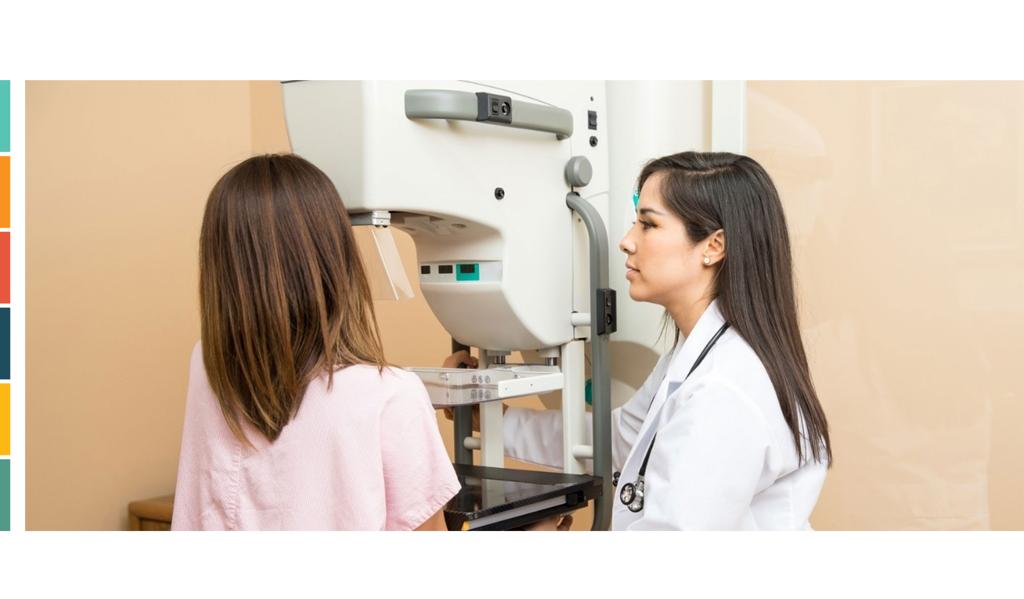Breast Health Package, Female, >40
Breast Health Center – a unit of Oncology Clinic at Yaşam Hospital – hosts all available means of technology to provide women with best medical care.
What is Mammogram?
Mammogram aims to detect early signs of breast cancer through visualizing the breast tissue with low-dose X-ray before its symptoms emerge. The procedure can also be performed to investigate a symptom (lump or focal pain).
When mammogram is scanned, the breast tissue appears white and opaque (cloudy) while fat tissue looks darker and translucent.
When to Scan Mammogram?
Women aged above 40 are recommended to have annual mammogram. It is also scanned for women with no sign or symptom related to breast.
Further examination may be required, in case an abnormality or a new symptom (lump or focal pain) is identified. Further investigations will help characterization of suspicious abnormalities.
How Common Are Abnormalities in Women Having Mammogram?
Potential abnormalities are observed in 6%-8% of women, who have mammogram. For this group of patients, further tests are ordered that may include physical examination of breasts, diagnostic mammogram, breast ultrasound and needle biopsy.
Abnormalities detected on mammogram are exactly characterized after these tests are completed.
How Does an Abnormality Look on Mammogram?
A potential abnormality that is identified on mammogram can be called nodule, mass lesion, lump, density or deterioration.
A smooth lump with well-defined margins is usually benign in nature.
Ultrasound is required to identify a lump and visualize its internal structure. Cyst implies a lump that is filled with fluid.
A lump that has irregular margins or look like “burst of a star” can be cancer and biopsy is usually recommended for these cases.
Microcalcification (small calcium deposits) is another type of abnormality. They are classified as benign, suspected or unspecified. Microcalcifications are mostly benign in nature. Biopsy can be recommended according to how microcalcifications look on advanced imaging studies.
What is accuracy rate of mammogram?
A condition is accurately diagnosed by 85 to 90 percent with mammogram. Mammograms can identify breast abnormalities before they enlarge enough to be recognized. However, mammogram can skip a palpable lump. Any abnormality that you feel in self examination of your breasts should be evaluated by your doctor.
What should be taken into account before mammogram?
You can follow your usual routine before a mammogram scan. You may take your medications and resume your usual eating pattern.
If you are breastfeeding or you are pregnant or think you may be pregnant, you should notify your doctor, as it may be necessary to postpone your mammogram.
What Should I Pay Attention Before Presenting for my Mammogram Appointment?
Do not use body powder, lotion/cream or deodorant on the day your mammogram is scanned, because these substances may look abnormal on mammogram.
You will be asked to remove/take off your clothes and jewelries above level of your waist and you will be given a gown to wear.
Mammogram is scanned by a mammography technician and acquired images are reviewed by a radiologist (a medical doctor who is specialized in imaging method and interventional treatments).
How is Mammogram scanned (?):
Technician will ask you take one of your breasts from the gown and place your breast on breast support plate in each time. Each breast is compressed between two plates while images are acquired. The breast is compressed to eliminate movement. The compression also flattens breast tissue to help radiologist see the tissue better. Moreover, dose of radiation is minimized, when breast is compressed to make breast tissue as thin as possible.
You may feel minimal discomfort for 3 to 5 seconds while compression is applied. Please notify your technician, if you cannot tolerate the compression. The compression can be bothersome at certain stages of menstrual cycle. We recommend you schedule your appointment seven to ten days after your menstrual cycle to minimize the discomfort.
What should I expect after Mammogram?
You may recognize/feel temporary discoloration of skin and/or mild pain due to compression. Most of women can resume normal activities of daily life immediately after mammography session.
Your results are reported in several days after the test. Your doctor will address all details, after your report is issued.
How often should you have mammogram?
Having a mammogram regularly every year, starting at age of 40 years, will help you recognize potential risks early.
What does Breast Health Package Cover?
Breast health package includes General Surgery Examination and Mammogram.





